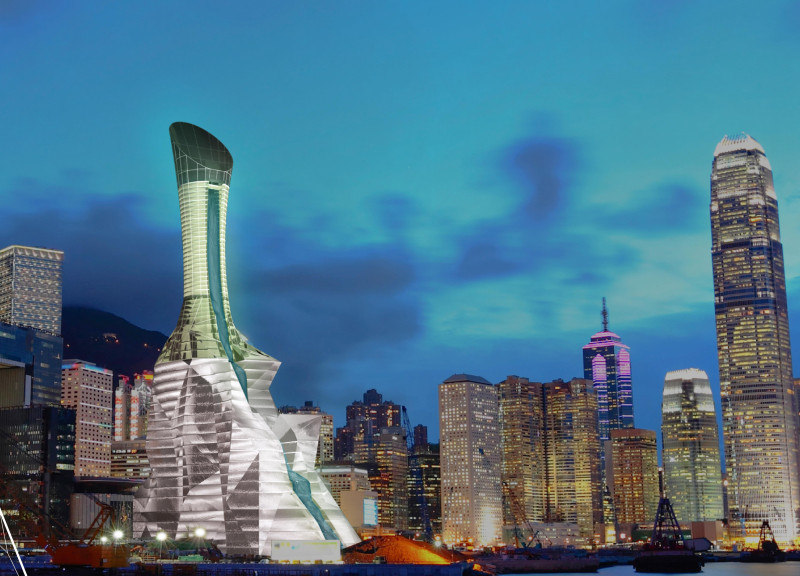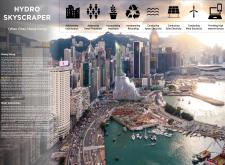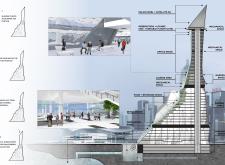5 key facts about this project
The Hydro Skyscraper in Wan Chai, Hong Kong, addresses the challenges of urban density while providing much-needed green space in a bustling city. This structure combines residential and commercial areas within a high-rise format. The design focuses on sustainability, incorporating both natural features and advanced technology to create an environment that benefits its users and the wider community.
Design Concept
The architectural idea behind the Hydro Skyscraper is to integrate greenery throughout the building. Vertical gardens not only beautify the space but also improve air quality, making the urban environment more livable. These areas allow people to relax and interact, fostering a sense of community and connection within the dense city.
Unique Features
A notable aspect of the design is the artificial waterfall. It serves multiple purposes. Visually, it enhances the aesthetics of the building. Functionally, it helps regulate temperature and humidity inside. This feature links the design to the nearby harbor, emphasizing a connection to nature while integrating sustainable practices within an urban setting.
Material Use
The construction relies on concrete slabs, steel beams, and rigid insulation. Concrete offers the strength needed for a structure of this height, while steel provides flexibility and support. Rigid insulation is crucial for maintaining energy efficiency, ensuring comfortable temperatures in all seasons.
Community Integration
The Hydro Skyscraper encourages communal interaction through its adaptable commercial spaces. Seasonal markets and food stalls meet changing consumer needs, supporting local vendors. Office spaces on the upper floors provide great views of the city and include amenities like a sky lounge and an observatory deck that create inviting places to work and unwind.
The Hydro Skyscraper stands as a thoughtful blend of design and practicality, characterized by its distinctive artificial waterfall. This feature flows within lush greenery, providing a refreshing contrast to the urban landscape and inviting people to engage with both the building and each other.






















































